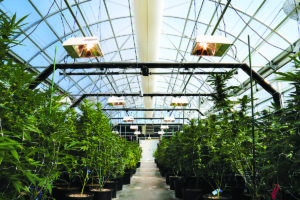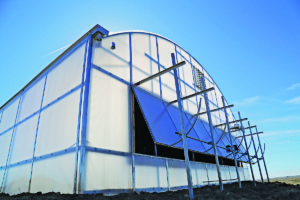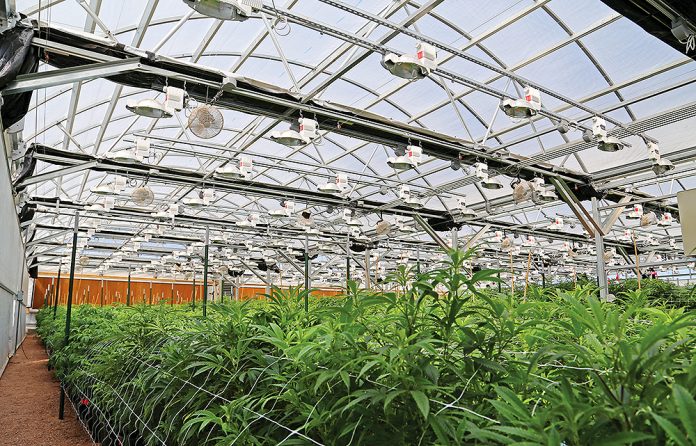Nutrition, temperature, lighting, and ventilation can make all the difference when you’re looking for ways to improve bud quality.
With medical and recreational cannabis markets booming, growers who focus their energy on cultivating denser, more potent buds may make their business more profitable. Paying special attention to nutritional regimen, temperature and humidity needs, lighting design, and ventilation will set cultivators on the path to growing superior bud.
Deliver the right type and amount of nutrients
Giving cannabis plants the right type and dosage of nutrients during the vegetative stage and the first few weeks of flowering is imperative. Vegetative cannabis plants need a large amount of growth-fostering nitrogen and potassium paired with a lesser amount of phosphorus.
During the flowering stage, use nutrients specifically formulated for budding. At this stage, it’s important to raise the levels of potassium and phosphorus. Growers should focus on cannabis-specific nutrients and avoid any product that is time-released, as those tend to deliver excessive amounts of nitrogen during the crucial flowering stage.
The growth of new stems and leaves slows significantly in the final six weeks of flowering, meaning the volume of nutrients should be cut back. It’s especially important to scale back the amount of nitrogen, as too much not only can prevent buds from reaching their full growth potential but also create an unpleasant chemical flavor and aroma.
Manipulate temperature and humidity
Although different strains of cannabis have slightly different needs, general rules of thumb apply to ambient temperature. Seedlings enjoy the range of 68 to 73 degrees Fahrenheit. Young cannabis plants in the vegetative stage prefer a warmer setting: 70 to 85 degrees. In the flowering stage, temperatures in 65- to 80-degree range are ideal. At night, most plants prefer temperatures between 68 and 75 degrees Fahrenheit. Colors like pink and purple come out when nighttime temperatures are at the low end of the scale.
Balancing humidity also is crucial to maintaining optimal bud health, especially when growing indoors. Low humidity creates a welcoming environment for spider mites and can cause cannabis plants to wilt, whereas high humidity can trigger bud rot.
As cannabis plants grow, ideal humidity levels fluctuate. For greenhouse and indoor settings, seedlings prefer environments with a relative-humidity range of 65 percent to 70 percent, which allows for better water absorption through the leaves. A range of 40 percent to 70 percent humidity is appropriate for the vegetative stage, while flowering plants require a range of 40 percent to 50 percent to avoid powdery mold, mildew, and bud rot. The late flowering period requires the lowest humidity levels, between 30 percent and 40 percent.
During the final two to three weeks before harvest, consider using a dehumidifier to drop humidity levels as low as possible. Professional cultivators swear by the technique for increasing resin. Intense dryness also appears to prompt trichome production.
Employ supplemental lighting
When growing in a warehouse or a commercial greenhouse, high-intensity discharge (HID) lights, compact fluorescent lights (CFL), and light-emitting diode (LED) lights reign supreme. Before buying any of them, however, consider how much heat and light is needed and how much energy will be used.

CFL bulbs are affordable and cover the full visible light spectrum, making them a healthy source of light for clones and young plants. CFL bulbs also have a low heat output, and they don’t use much electricity. Due to their small size, CFL bulbs are best suited for small spaces.
LEDs are receiving lots of attention because they produce more light at lower wattage and use less energy than traditional bulbs. They also produce less heat, meaning they can be mounted closer to plants. Make sure LEDs used for cannabis contain green and white light (some older bulbs don’t). A shortage in those portions of the spectrum can lead to inefficient nutrient uptake.
Ensure good ventilation
Good air circulation boosts CO2 replenishment, aids in water and nutrient absorption, and helps strengthen stems. Indoors, oscillating fans placed above and below the canopy help ensure sufficient air exchange. Do not point fans directly at plants. Direct ventilation can dehydrate seedlings and result in windburn, which makes leaves curl and droop.

Cannabis cultivation involves trial and error, but the effort will prove worth the investment. Growers want to produce the best bud possible, so mastering these four aspects of cultivation is essential.










[…] of cannabis is thought to originate in Afghanistan or India. It’s characterized by the presence of larger buds, dense branches, and a short stature. It also has a shorter flowering cycle than its sativa cousin. […]
[…] in retrospect, everyone who is careless in that regard quickly comes to regret it. Up to 40 percent more buds may be harvested from a trained cannabis plant than from an untrained one. Indoor cultivation […]